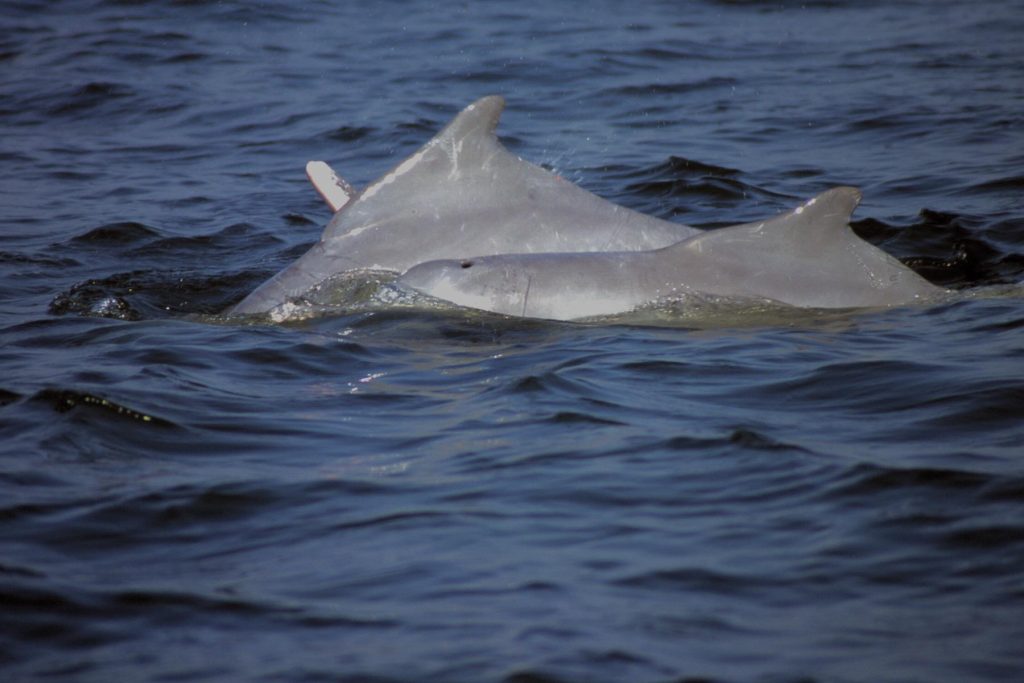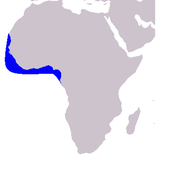Common Name: Indian Ocean humpback dolphin
Humpback dolphins (Sousa sp.): Two genetic variations of humpback dolphins occur along the Indian coastline,the Indian Ocean humpback dolphin (Sousa plumbea) along the west coast and the Indo Pacific humpback dolphin (Sousa chinensis) by the east coast. As genetic studies provide newer results this might change further.
General Description: The general appearance of Indian Ocean humpback dolphins is similar to that of Indo Pacific humpback dolphin with a slightly different coloration. These dolphins have more of a uniform dark-grey (plumbeous or lead coloured) colour with white mottling interspersed with slight pink pigmentation in certain individuals. The belly or the ventral surface of the body is lighter.

Indian Ocean Humpback dolphins showing the large hump which the dorsal fin sits & the dark grey colouration.
Size: The largest length in an adult humpback dolphin was recorded at about 3.5 m. Variation in length over sex have not yet been studied. New born calves measure up to about a metre in length.
Appearance At Sea: Their appearance is very similar to the Indo Pacific humpback dolphins. Group sizes appear to be slightly larger than the Indo Pacific humpback dolphins. Large groups of about 50-100 individuals are with smaller sub-groups are generally observed.
Found In: Indian Ocean humpback dolphins are found in localised areas of patchy distributions mainly in shallow waters very close to the shore (<20m depth, <1.5 km from shore) and around river mouths and estuaries.
Indian Ocean humpback dolphins primarily feed on fish like mackerel, mullet, sardines and pomfret found along the shallow estuarine areas.
These dolphins have been recorded to feed from and around active fishing gear like gill nets, shore seines, purse seine, Chinese fishing nets, dip nets etc. In several instances they have been known to use these gear as barriers to herd prey. In some regions, dolphin depredation causes economic losses to the local fisheries.
World Distribution: These dolphins have a wide distribution range from the South Africa to the southern Bay of Bengal.
Could Be Confused With: Indian Ocean humpback dolphins can be confused with the Indo Pacific humpback dolphins due to the similarity in morphological features and Bottlenose dolphins.
Diagnostic Features: At sea, prominent dorsal fin placed on a large hump in the middle of the back; long, slender beak.
Stranded Specimens: A dead adult can be easily identified by the size of its hump and number of teeth. There may be 29 to 38 pairs of peg-like teeth in each jaw




